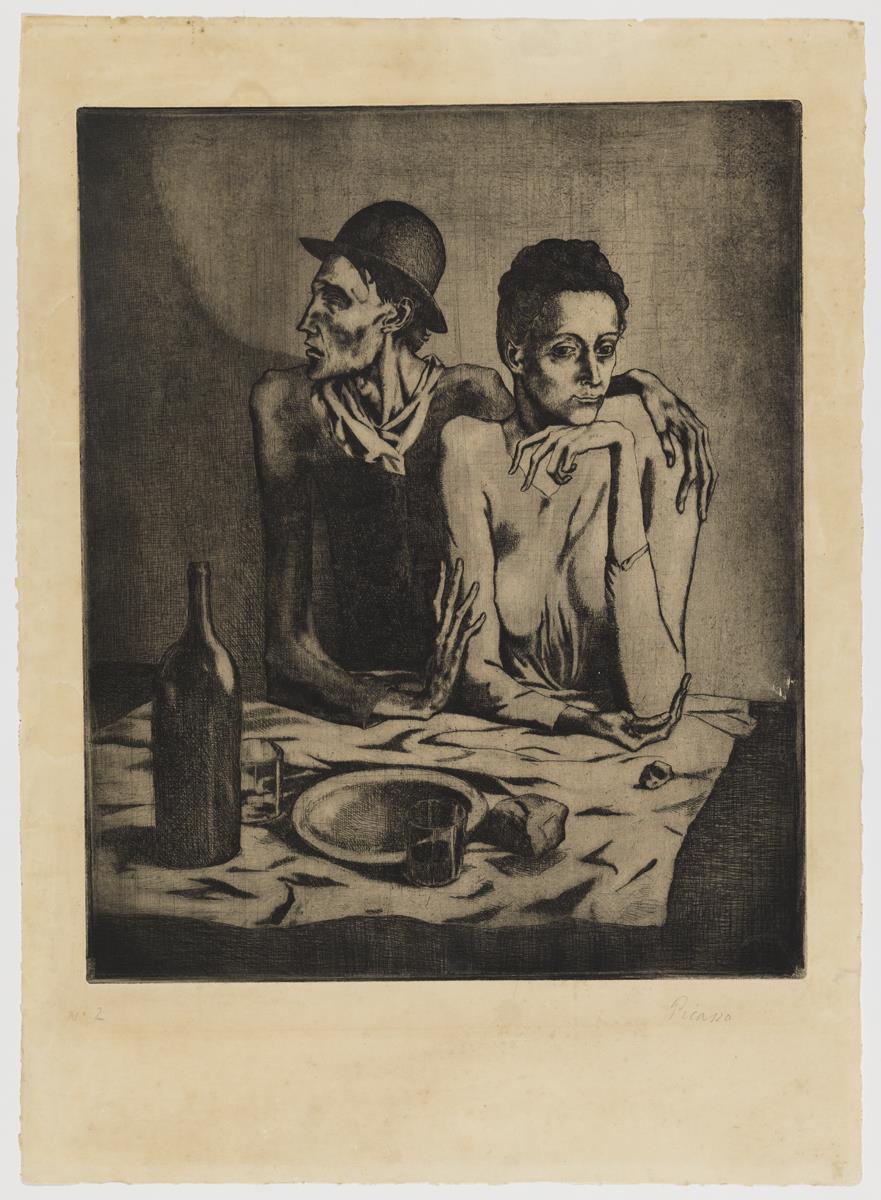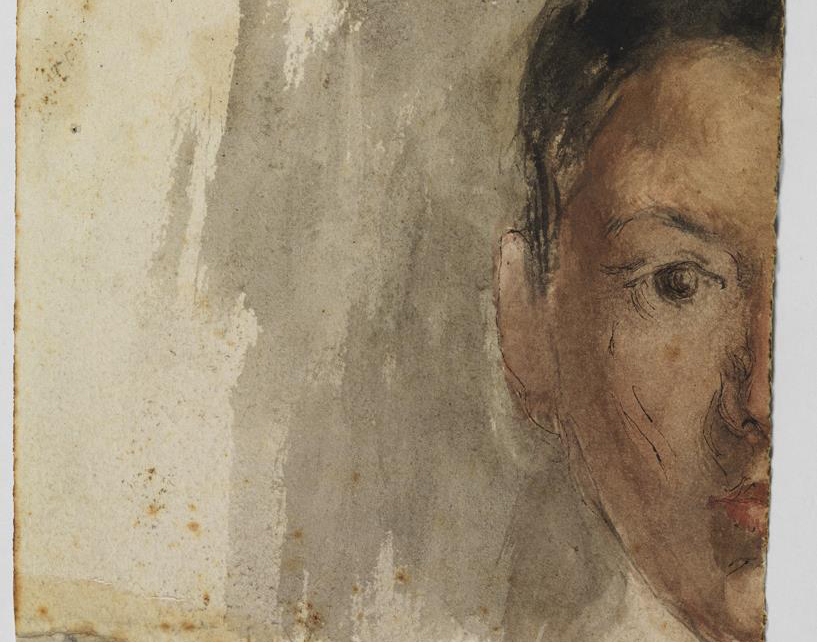The Frugal Repast

The Frugal Repast
The Frugal Repast
On 3 September 1904, Picasso etched “The Frugal Meal” on a zinc plate on which Joan González, brother of sculptor Juli González, had previously begun to etch a landscape. Created in two states, this final etching eventually saw the light of day in Picasso’s studio at the Bateau-Lavoir, on Rue Ravignan in the Montmartre district of Paris, where he settled following his definitive departure from Barcelona in April 1904. In that same building lived Ricard Canals, an artist from Barcelona with whom Picasso had a close friendship at the time and who mentored him in his new artistic endeavour to master the etching technique.
A couple of diners share a frugal meal: on the table, upon the white tablecloth, a couple of pieces of bread, a plate, two glasses and a bottle of wine, all empty. The tension of the scene is concentrated on the couple; the man, blind, turns his head away from the woman, on whose shoulder he rests his arm and hand, extremely long and skeletal. The woman, with wide eyes and a languid gaze, looks directly at the spectator while holding her chin with her hand, also long and skeletal. Their limbs, forming a quasi-circle, surround and embrace the emaciated figures’ torsos. If from the thematic point of view “The Frugal Meal” is fully integrated into the so-called blue period—as the presence of two of the recurring themes of those years, poverty and blindness, makes clear—from the stylistic point of view, the pronounced distortion with which the two protagonists are represented brings them closer to El Greco’s mannerism, in a similar way to the magnificent drawing “The Madman”, also from 1904 (MPB 4272), or “The Blind Man” (MPB 115007), which became part of the Museum’s collection in 2021. With this penetrating gaze into the hopelessness of someone who has lost it all, including hope, Picasso practically concluded the blue period and soon after initiated the so-called pink period, focused on the world of the circus and “commedia dell’arte”, a universe populated by humble beings, although not miserable, as in the previous period.
That same September, Picasso sent his friend Sebastià Junyent Vidal, who lived in Barcelona, a couple of copies of this etching in its second and definitive state, printed on laid Arches paper by Eugène Delâtre in Paris. One of the prints (complete with a dedication) was for Junyent himself; the other had to be delivered by his friend to the artist’s father, José Ruiz Blasco. The latter print is the one that eventually became part of the Museum’s collections thanks to the donation the artist himself made in 1970. On the other hand, in 1913 art dealer and publisher Ambroise Vollard bought the original zinc plate along with fourteen other elaborate plates created between 1904 and 1905; he commissioned Louis Fort, in Paris, to plate them in steel and print them in order to carry out the publishing of the so-called “Acrobats Suite”, considered to be the first of Picasso’s series of prints. “The Frugal Meal” is also considered the true starting point for Picasso as an etcher, a passion that the artist maintained until the end of his life.
61.4 cm x 44.3 cm
Gift of Pablo Picasso, 1970
MPB 110.011










